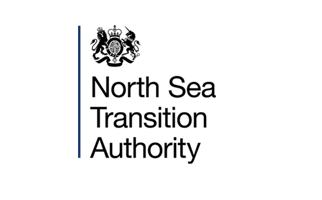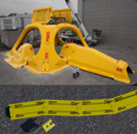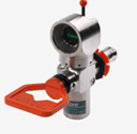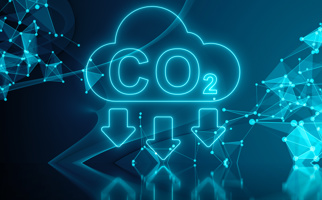
Operators Technology plans are showing increased experience by operators in technology deployments to support subsea developments. In addition remote and automated subsea inspection technologies are reducing the number of offshore visits and manned interventions.
Insights from Operators’ experience reported in their Technology Plans (2018-22)
Summary Findings (Click on Sub-Categories for detail)
- Pipelines, Risers & Jumpers
Subsea Technologies in Pipelines, Risers & Jumpers are focussed on cost efficient pipeline manufacturing processes, adding corrosion resistance linings to carbon steel pipe, use of Composite materials and Jumper Heating for heavy oil. - Manifolds, Umbilical’s & Control Systems
Manifolds, Umbilical’s and Control systems have seen an increase in numbers of technologies, doubling in numbers since the 2020 survey data, updated new generation control systems, non-metallic protection structures for manifolds, wellheads and Pipelines/umbilical’s, new methods of umbilical fault finding becoming adopted by operators this year. - Inspection & Intervention Systems
Advances in Autonomous Vessel design, both subsea and surface modes of deployment enable unmanned survey and subsea inspections remotely from the host vessel, Diverless methods of scanning pipelines & Risers, Retrofittable sand detectors - Processing, Boosting & Storage
Subsea Technologies in Processing Boosting & Storage – Operators are focussed on expanding subsea facilities while maximising available deck space with subsea processing facilities including Subsea Gas Compression and Subsea Water Treatment, multiphase pumping to enhance tieback distance and wellhead seawater injection with seawater pump on the Wellhead.
Subsea Systems technologies
- Over 55 technology plans submitted each year
- Increase in number of discrete technologies in 2022, Reporting interest in this area (participation growing from 3 operators in 2018, to 7 operators in 2022)
- Large number (35) of respondents not yet considering this theme (based on submissions)
1. Pipelines, Risers & Jumpers
Subsea Technologies in Pipelines, Risers & Jumpers are focussed on cost efficient pipeline manufacturing processes, adding corrosion resistant linings to carbon steel pipe, use of Composite materials and Jumper Heating for heavy oils
- Mechanically Lined Pipe - MLP is made of a liner inserted into a carbon steel offshore grade pipe. The liner is typically CRA material around 3 mm thick. The liner is not bonded to the host pipe which simplifies the fabrication but adds challenges on integrity in service. The liner is welded to the backing pipe at the ends. (Deployable Technology)
- Shell (Jackdaw) TRL 9 Proven Technologies
- Composite Pipeline - Composite pipeline to replace corroded pipeline section to provide long term protection and avoid re-occurence of galvanic corrosion (Deployable Technology)
- Perenco (Bell) TRL 9 Proven Technologies
- LinerBridge polymer barrier technology to minimise internal corrosion of pipelines and risers Minimise corrosion risk, reduce asset lifetime cost, maximise asset uptime and facilitate enhanced oil recovery to maximise reservoir value. (Deployable Technology)
- Ithaca (Cook) TRL 9 Proven Technologies
Technology Example :
LinerBridge® has been qualified by DNV GL for use in offshore and onshore applications including towed pipeline bundles and reel-lay. The technology has also been granted approval for use in water injection applications worldwide by Equinor
View Technology
- Combined Flowline and Umbilical - Development group are assessing combined flowline and umbilical technology, potentially including heated systems to enable development of marginal discoveries through reduced costs (Late Development/Pilot)
- EnQuest (Comrie) TRL 5-7 Late Development/Pilot
- Remote/Local Jumper Heating - System to provide local heating of subsea jumpers to overcome high viscosity encountered during start up (Early Development)
- Apache (Corona) TRL 1-4 Early Development
2. Manifolds, Umbilical’s & Control Systems
Manifolds, Umbilical’s and Control systems have seen an increase in numbers of technologies, doubling in numbers since the 2020 survey data, updated new generation control systems, non-metallic protection structures for manifolds, wellheads and Pipelines/umbilical’s, new methods of umbilical fault finding becoming adopted by operators this year.
- Low IR Remedial Technology - Installation of VIPER V-LIFE Low IR insulation resistance recovery technology
- Repsol Sinopec/Neo Energy (Arkwright/Donan) TRL 9 Proven Technologies
- Subsea Control Modules – Subsea Control Module upgrade option to address known obsolescence issues associated with existing units installed subsea
- Shell (Pierce) TRL 9 Proven Technologies
- Shell (Pierce) TRL 9 Proven Technologies
- CSUB subsea equipment protection – GRP Based - Alternative materials solution for Pipeline, Wellhead & Manifold protection structures
- TotalEnergies (Edradour) TRL 9 Proven Technologies
- TotalEnergies (Edradour) TRL 9 Proven Technologies
Technology Example :
CSUB GRP Wellhead protection structure, and Pipeline protection structures
View Technology
- Compact low voltage standalone TDR unit - in 2019 Dana deployed on Hudson the subsea TDR is a compact low voltage standalone unit. Reducing test duration, and the number of personnel required offshore. And more than doubling the speed of downline method.
- DanaKNOC (Hudson) TRL 9 Proven Technologies
- DanaKNOC (Hudson) TRL 9 Proven Technologies
Technology Example :
The C-Kore Subsea TDR is a compact automated tool for testing subsea electrical assets. It is simple to use, automating the previously complex work of driving a TDR.
View Technology
- Technip FMC subsea 2.0 Control System – New generation subsea control system Harbour Energy (Brittania) TRL 5-7 Late Development/Pilot
Other emerging technologies include developing new Subsea Control’s Obsolescence Solutions, Combined Subsea Utilities, Subsea power/comms Using existing umbilical’s with SCM's attached and adding new SCM's with different communications protocols
3. Inspection & Intervention Systems
Advances in Autonomous Vessel design, both subsea and surface modes of deployment enable unmanned survey and subsea inspections remotely from the host vessel, Diverless methods of scanning pipelines & Risers, Retrofittable sand detectors
- Riser Integrity Fibre-Optics - Use of Fibre Optics built into riser flexibles to continuously monitor integrity (Existing Technology)
- TotalEnergies (Culzean) TRL 9 Proven Technologies
- TotalEnergies (Culzean) TRL 9 Proven Technologies
- Retrofit Accoustic Sand detector - Existing system did not give the capability to monitor for sand during PDP phase. Consequently subsea hardware was retrospectively installed at critical locations and topsides software changes implemented. (Existing Technology)
- Shell – (Pierce) TRL 9 Proven Technologies
- Shell – (Pierce) TRL 9 Proven Technologies
Technology Example :
The Roxar™ SAM Acoustic Sand Monitor is a non-intrusive device designed to measure intensity of solids as well as the rate in oil and gas flow lines using acoustic technology.
View Technology
- Multibore ILI pigging - Pigging tool capable of ILI of multibore pipeline and subsequent traverse/recovery from 36" pipeline system (Late Development/Pilot)
- Harbour Brittania TRL 5-7 Late Development/Pilot
- ROV Deployed Flexible Scanner - ROV deployed Subsea flexible scanner to identify extent of corrosion to armour wires within flexible pipelines. (Late Development/Pilot)
- Apache (Corona) TRL 5-7 Late Development/Pilot
- Blue Essence USV - AS - Surface and RoV Inspections: Autonomous Surface Vessel acts as a autonomous mothership, carries a 450m depth rated full spec ROV and can be controlled from distant onshore operations centres – reducing both manning and emissions (Late Development/Pilot)
- TotalEnergies (Janice) TRL 5-7 Late Development/Pilot
- TotalEnergies (Janice) TRL 5-7 Late Development/Pilot
Technology Example :
Fitted with an electric remotely operated vehicle (eROV), the USV mobilized at the end of April and was controlled from the Woodside-operated King Bay supply facility and Fugro’s remote operations center in Perth, about 1,500 km (932 mi) south of the trunklines.
View Technology
- Freespan Scanner - scanner add-on pigging tool to measure free spans. (Early Development)
- Apache – (Beryl) TRL 1-4 Early development
4. Processing Boosting & Storage
Subsea Technologies in Processing Boosting & Storage – Operators are focussed on expanding subsea facilities while maximising available deck space with subsea processing facilities including Subsea Gas Compression and Subsea Water Treatment, multiphase pumping to enhance tieback distance and wellhead seawater injection with seawater pump on the Wellhead.
- Multiphase subsea pumping - Reduce subsea costs and increase reserves through centralised subsea pumping
- Apache (Corona) TRL 9 Proven Technologies
- Apache (Corona) TRL 9 Proven Technologies
- Wellhead seawater injection - Seawater pump at wellhead to eliminate need for injection water supply system to subsea wells
- Apache (Corona) (TRL 9 Proven Technologies
- Apache (Corona) (TRL 9 Proven Technologies
- Subsea Gas Compression systems - TotalEnergies looking at Aker OSS gas compression - Reliable gas compression facilities in a subsea environment
- TotalEnergies (Edradour) TRL 8 Early Commercialisation
Technology Example :
Aker’s Conventional Subsea Gas Compression system includes a subsea separator, motor-compressor and pump units. They are used for high capacity applications.
View Technology
- Subsea processing - Apache has ongoing assessment of Seabox water injection treatment for existing subsea well stock to increase water injection capability and overcome platform slot constraints
- Apache (Beryl) TRL 5-7 Late Development/Pilot
- Apache (Beryl) TRL 5-7 Late Development/Pilot
Technology Example :
The NOV Seabox™ subsea water treatment module and SWIT™ technology are subsea technologies developed with support and sponsorship from major oil companies. Together they enable treatment of raw seawater directly on the seabed for injection into oil wells for pressure support, improved sweep efficiency, and increased oil recovery.
View Technology



